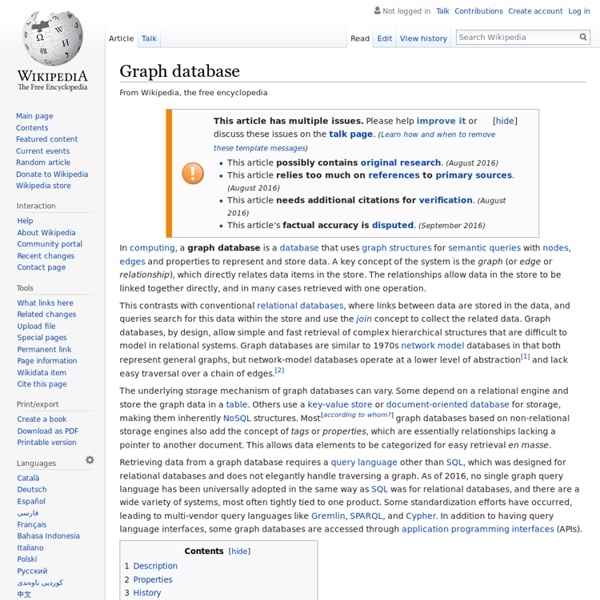Graph database

Learn
At Neo4j, we want to provide options to solve many different kinds of business and technical needs. Our goal is that our products are simple and fit your use case, whatever it may be. Whether you are relying upon graphs for transactions, market analysis, operations optimizations, or anything else, Neo4j strives to provide a seamless process for integrating our tools with the rest of your existing system. Capabilities in the Neo4j graph platform include aiding developers to import data to the graph, business analysts to explore the data with ease, and data scientists to make decisions based on analysis results. Graph Data Modeling The richness of graph data and the performance of your queries depends closely on how the data is modeled. Your data model may also impact the queries you write and the performance of the results returned. Cypher - A Next-Generation Query Language We wanted to make querying graph data not only fun, but easy to learn, understand, and use for everyone. Data Import
NoSQL Frankfurt 2010 - The GraphDB Landscape and sones
Social networks in the database: using a graph database
Recently Lorenzo Alberton gave a talk on Trees In The Database where he showed the most used approaches to storing trees in a relational database. Now he has moved on to an even more interesting topic with his article Graphs in the database: SQL meets social networks. Right from the beginning of his excellent article Alberton puts this technical challenge in a proper context: Graphs are ubiquitous. Social or P2P networks, thesauri, route planning systems, recommendation systems, collaborative filtering, even the World Wide Web itself is ultimately a graph! Given their importance, it’s surely worth spending some time in studying some algorithms and models to represent and work with them effectively. After a brief explanation of what a graph data structure is, the article goes on to show how graphs can be represented in a table-based database. This post is going to show how the same things can be done when using a native graph database, namely Neo4j. Representing a graph Transitive closure
Related:
Related:



